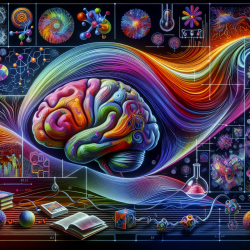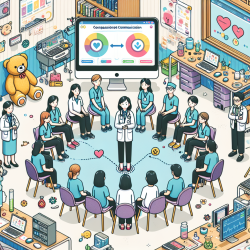Unlocking the Secrets of Rapid Language Learning: Insights from Brain Science
In the ever-evolving field of education, understanding how we learn languages is crucial. Recent research titled "Rapid microstructural plasticity in the cortical semantic network following a short language learning session" sheds light on the brain's ability to adapt quickly during language acquisition. This groundbreaking study provides valuable insights that can enhance the skills of educators and therapists, particularly those involved in special education.
Understanding the Research
The study explores how the brain undergoes rapid microstructural changes during language learning. Using advanced techniques like diffusion kurtosis imaging (DKI) and transcranial magnetic stimulation (TMS), researchers observed significant neural adaptations within just 40 minutes of a language learning session. This suggests that the brain is capable of quick structural reorganization, which can be harnessed to improve language acquisition strategies.
Key Findings and Implications
Here are some of the critical findings from the study:
- Rapid Adaptation: The brain's cortical semantic network can reorganize itself swiftly, even after a short language learning session.
- Role of Motor Cortex: The motor cortex plays a crucial role in encoding the meaning of new action words, highlighting the interconnectedness of language and motor functions.
- Neural Plasticity: The study provides evidence of the brain's remarkable plasticity, which can be influenced by external factors like TMS.
These findings have profound implications for educators and therapists. By understanding the brain's capacity for rapid adaptation, practitioners can develop more effective language learning programs. Incorporating activities that engage both linguistic and motor functions can enhance language acquisition, particularly for students with learning challenges.
Practical Applications
Educators and therapists can implement the following strategies based on the study's outcomes:
- Integrate Motor Activities: Incorporate activities that involve both language and physical movement to stimulate the motor cortex and enhance language learning.
- Utilize Technology: Leverage tools like virtual environments and interactive games to create immersive language learning experiences.
- Explore Brain Stimulation Techniques: Consider non-invasive brain stimulation methods, such as TMS, to potentially boost language learning outcomes.
By adopting these strategies, practitioners can create a more dynamic and effective learning environment that taps into the brain's natural ability to adapt and learn rapidly.
Encouraging Further Research
While this study provides valuable insights, it also opens the door for further research. Understanding the long-term effects of rapid language learning and exploring additional brain regions involved in this process are crucial next steps. Practitioners are encouraged to stay informed about the latest research and consider collaborating with neuroscientists to continue advancing the field of language education.
To read the original research paper, please follow this link: Rapid microstructural plasticity in the cortical semantic network following a short language learning session.










